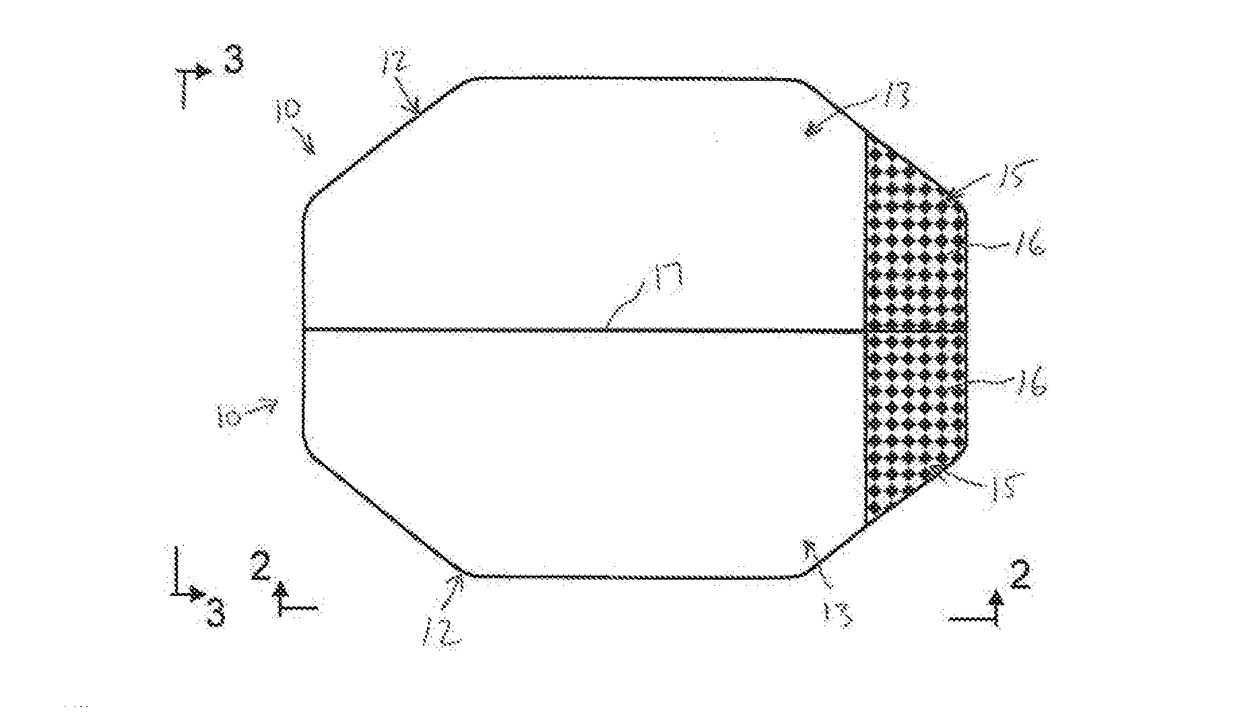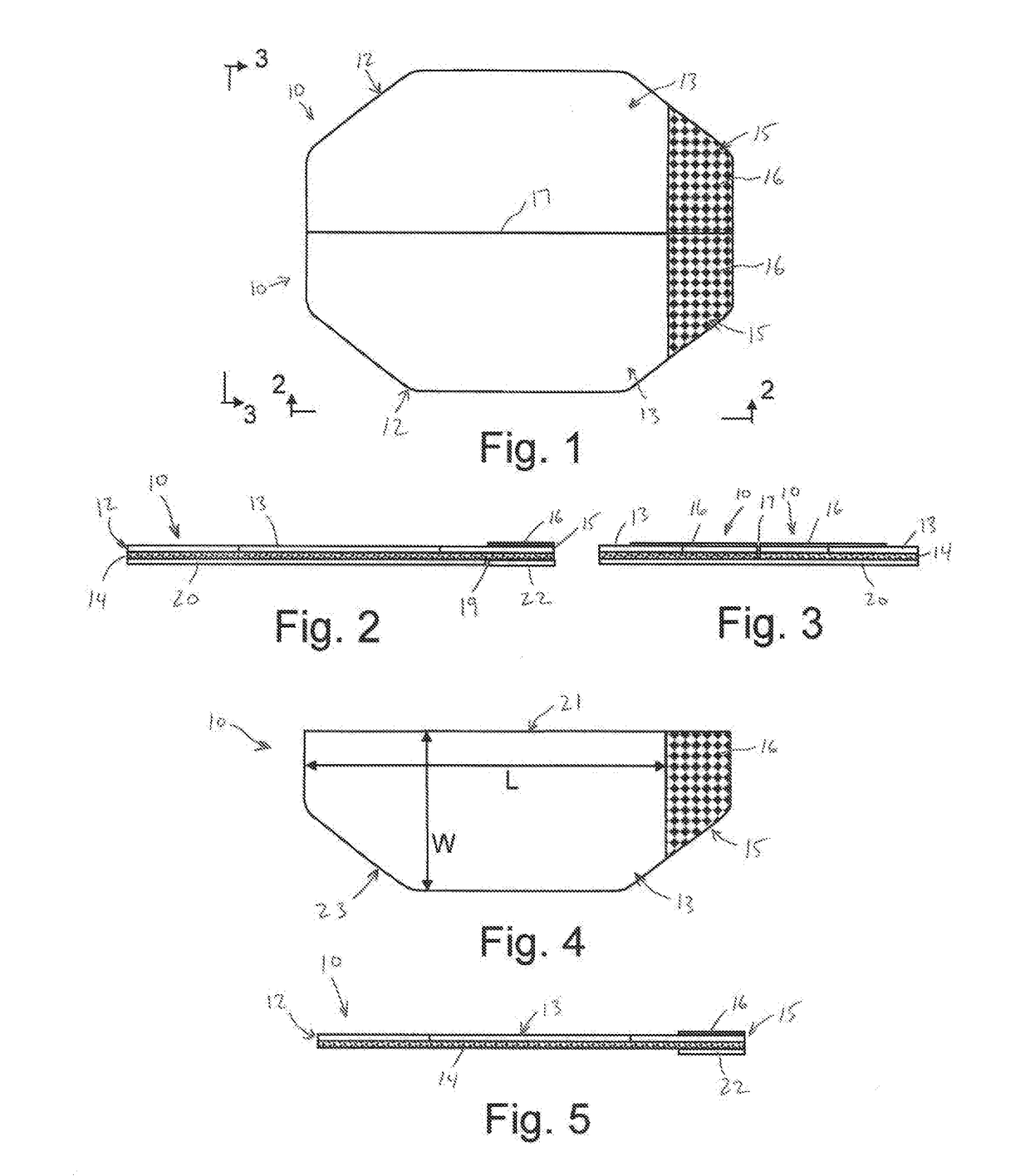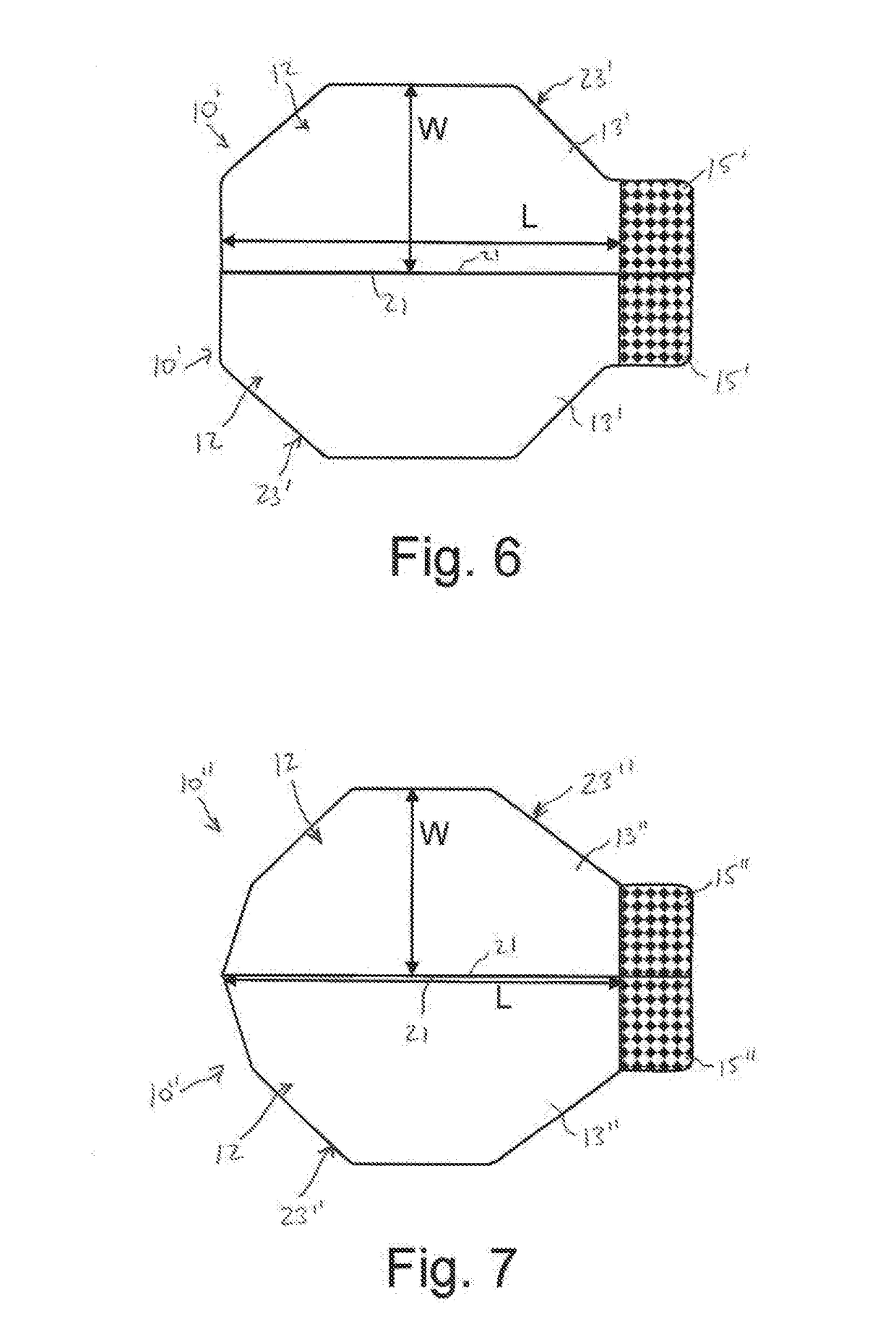Eyelid closure patch
- Summary
- Abstract
- Description
- Claims
- Application Information
AI Technical Summary
Benefits of technology
Problems solved by technology
Method used
Image
Examples
Embodiment Construction
[0029]In the drawings, like numerals indicate like elements throughout. Certain terminology is used herein for convenience only and is not to be taken as a limitation on the present invention. The following describes preferred embodiments of the present invention. However, it should be understood, based on this disclosure, that the invention is not limited by the preferred embodiments described herein.
[0030]Referring to FIGS. 1-5, an exemplary eye closure patch 10 in accordance with an embodiment of the invention will be described. The eye closure patch 10 generally comprises a flexible transparent backing material 12 which defines a main body 13 and a tab 15 extending from the main body 13. One surface of the backing material 12 is coated with an adhesive 14. In the present embodiment, the adhesive 14 extends along the entire surface of the backing material 12, with the main body 13 including a removable cover sheet 20 such that the adhesive 14 may be exposed as illustrated in FIG....
PUM
 Login to View More
Login to View More Abstract
Description
Claims
Application Information
 Login to View More
Login to View More - R&D
- Intellectual Property
- Life Sciences
- Materials
- Tech Scout
- Unparalleled Data Quality
- Higher Quality Content
- 60% Fewer Hallucinations
Browse by: Latest US Patents, China's latest patents, Technical Efficacy Thesaurus, Application Domain, Technology Topic, Popular Technical Reports.
© 2025 PatSnap. All rights reserved.Legal|Privacy policy|Modern Slavery Act Transparency Statement|Sitemap|About US| Contact US: help@patsnap.com



